After a few moments of struggling to eat the juicy grilled pork chop in front of me using a fork and spoon, I suddenly remembered that I already knew the solution to this specific predicament. I stood up and passed through a cloud of smoke, approached the man in charge of the large barbecue outside, and said, “Anh ơi, cắt sườn được không?”. Literally, “Hey older brother, possible to cut the ribs?” but as I butchered the pronunciation, my scissors-cutting-air-gesture did most of the communicating. He pulled out a massive pair of scissors and quickly cut the meat into easy-to-eat pieces while saying something like I should have told him about this when I ordered. Ironically, I had forgotten the Vietnamese word for “forgot”, so I just smiled and thanked him.
The place is called “Quán Cơm Tấm 236” in typical Vietnamese naming fashion. “Quán” is a simpler eatery than a restaurant, “cơm tấm” is the only dish they serve, and 236 is the street number. “Cơm tấm” is a common breakfast dish in Southern Vietnam, but coming from a country where breakfast means bread, I tend to have it for lunch or dinner instead. Cơm tấm consists of a pork chop grilled on the spot served with broken rice, an egg sunny side up, an egg cake, some pickled vegetables, and a fish sauce with lime and chili.
I found this gem a few weeks earlier when I smelled BBQ on my way home from work. This was still in my first year in Ho Chi Minh City. Seven years later, I moved back to Sweden, but I still visit every year, and this eatery is still found in the same spot.
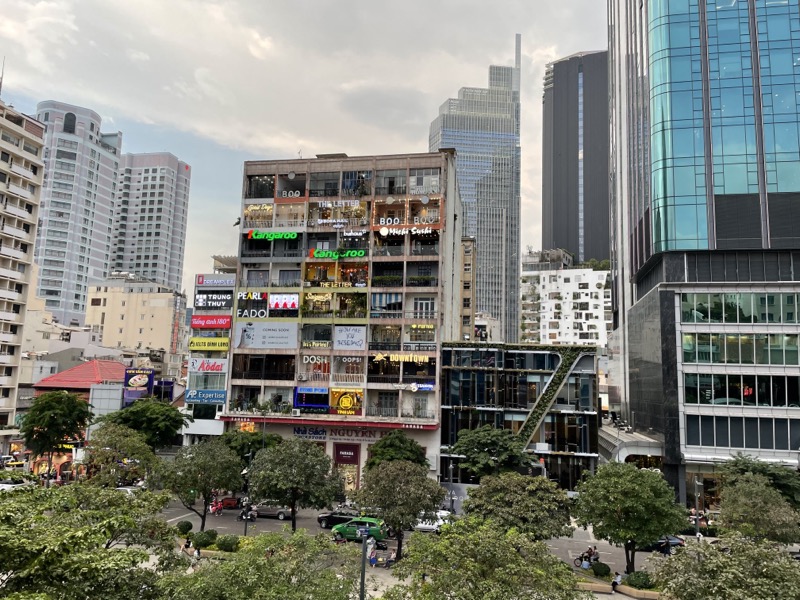
Apartment building turned food court
Ho Chi Minh City, the food city
Ho Chi Minh City is considered one of the best food cities in the world, and if you travel to eat like me, it is a must for your bucket list.
The Vietnamese take pride in their food, and the culture of eating out is very strong, making it possible to have great places for a meal pretty much everywhere in the city. Vietnamese cuisine is distinctly its own thing, but you can see influences from Chinese, Korean, and Japanese cuisine. These also happen to be the largest groups of immigrants in Vietnam. And of course, the French left their baguettes behind as their colonial rule ended.
My favorite type of eating experience here is getting out of the never-ending river of motorbikes and into a calm alleyway, walking deeper into the maze of narrow buildings until I don’t really know how to get out again. There somewhere, I often find a great little spot specialized in one or a few dishes. As a bonus, you get a pretty intimate experience of everyday life for the people who call this city their home.
What dishes to try and where to try them
Common Vietnamese dishes include noodle soups such as “phở”, non-soup noodle dishes such as “bún thịt nướng”, rice dishes such as “cơm tấm”, the crispy Vietnamese pancakes “bánh xèo”, snails “ốc”, beefsteak with eggs called “bò né”, and the filled baguettes “bánh mì”. Also, let’s not forget about the delicious Vietnamese iced coffee “cà phê sữa đá”, and snacks like the sweet soups “chè”.
There are regional differences too, with Northern Vietnam having more subtle flavors, Central Vietnam being the spiciest and saltiest, and Southern Vietnam having oilier and sweeter food. It is all pretty damn delicious though. In Ho Chi Minh City you can find all three together with food from around the world thanks to being one of the world’s thirty largest cities. Among other things, you can enjoy world-class Japanese, Chinese, and Indian food here.
People will argue until the end of time about the best spots to try. I have selected a collection of high-quality eateries that I keep coming back to. Many of the spots have been around for decades, and they have all been “Uyên-approved” too. Uyên is my girlfriend, who is an actual local, born and raised in Ho Chi Minh City.
Phở
“Phở” is Vietnam’s inofficial national dish. A noodle soup normally served with thinly sliced beef that cooks in the broth right before you eat it. The broth is the key, and top phở shops prepare it in elaborate ways over the course of many hours. People often try just the broth with a spoon before adding additional flavors like beansprouts, lime, chili, hoisin, chili sauces etc. Both Phở Hòa and Phở Dậu have been around for more than 50 years and are still making some of the best noodle soups in the world. Phở Hòa makes Southern style phở, and Phở Dậu makes Northern style phở. Both are delicious.
Phở Hòa
260C Pasteur, Ward 8, District 3
Phở Dậu
288 Nam Kỳ Khởi Nghĩa, Ward 8, District 3
Bún thịt nướng
“Bún thịt nướng” is garlic-marinated grilled pork with rice noodles, peanuts, herbs, often a fried spring roll or two, and a spicy sauce made from fish sauce. Sometimes it is hard to choose a single place to recommend, for “bún thịt nướng” it is not. This is simply the best place. Even the chef at my favorite Vietnamese restaurant in Sweden goes to this specific street vendor. It is not super comfortable to sit on a low plastic stool on the sidewalk, but it doesn’t matter. Just go.
Bún Thịt Nướng – Nguyễn Trung Trực
1 Nguyễn Trung Trực, Ward Bến Thành, District 1
Cơm tấm
“Cơm tấm” is a grilled pork chop served with broken rice, a fried egg, an egg cake, some pickled vegetables, and a fish sauce with lime and chili. My pick here is probably not the best place in town, but it has been around since forever, and I really like their version. It is always full of locals too.
Quán Cơm Tấm 236
236 Xô Viết Nghệ Tĩnh, Ward 21, District Bình Thạnh
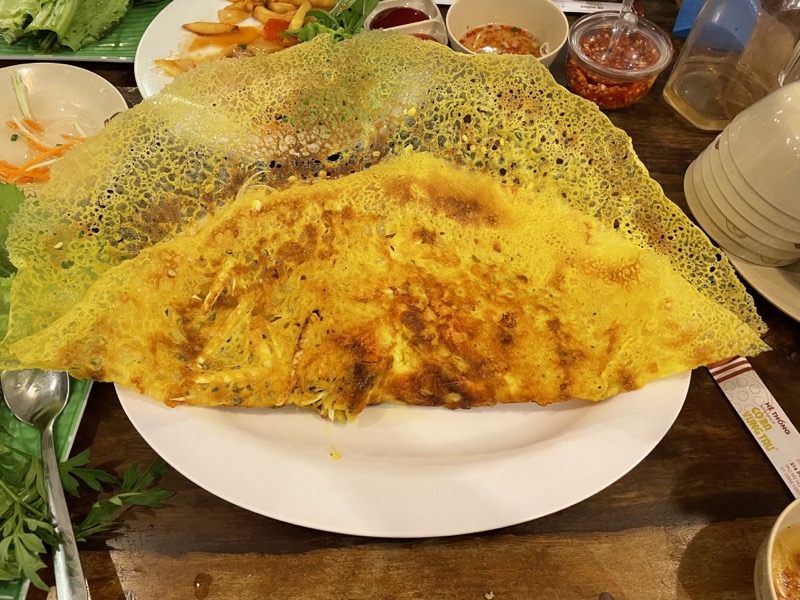
Banh xeo at Co Ba Vung Tau
Bánh xèo
“Bánh xèo” is a yellow Vietnamese crispy rice pancake filled with seafood, mushrooms, and vegetables. The yellow color comes from turmeric, a plant from the ginger family common in Southeast Asian cooking. Both of these places serve a high-quality pancake, but I have a slight preference for Cô Ba Vũng Tàu as then I can have “bánh khọt” too. Those small crispy and savory cakes with either pork or shrimp topping are not to be missed.
Cô Ba Vũng Tàu
40B Trần Cao Vân, Ward 6, District 3
Bánh Xèo 46A
46 Đinh Công Tráng, Ward Tân Định, District 1
Ốc
“Ốc” means snail and is a popular dish, perhaps a remnant of the French connection. Often “ốc” places are more of a category of restaurants that offer a wide range of seafood dishes though, so you don’t have to love this specific shelled mollusk to enjoy a visit. The restaurant below is located in a quiet alleyway and has several floors of tables as well as outdoor seating, and here you will find seafood that you have never seen before cooked to perfection. Prepare to point at photos to order.
Ốc Đào
212B/D48 Nguyễn Trãi, Ward Nguyễn Cư Trinh, District 1
Bò né
“Bò né” is one of the most brilliantly simple dishes ever. It is named after the action of dodging splashing butter or oil, as it is strips of beefsteak with egg, onion, and often some paté served on a sizzling cast iron plate that pretty much has to be shaped as a cow for things to feel right.
Bò Né Lệ Hồng
489/29/20 Huỳnh Văn Bánh, Ward 13, District Phú Nhuận
Bánh mì
“Bánh mì” is another contender for Vietnam’s national dish, especially as the sandwich has gained such a following abroad. In Ho Chi Minh City you will find many varieties of this rice flour baguette filled with lovely things. The standard one comes with mayonnaise, paté, pickled and fresh vegetables, cold cuts, and condiments such as soy sauce, fish sauce, and chili sauce. You will find terrific options of this type at Bánh Mì Sáu Minh. But you have to look elsewhere for my favorite Vietnamese sandwich “bánh mì thịt nướng” which has grilled pork meatballs with cucumber and a rich soy chili sauce. The best one you will ever eat can be found at Bánh Mì 37. Do note that this is a street food vendor that opens for just a few hours every day, normally between 5-8 pm or so. Another popular type is “bánh mì ốp la” which is simply a fried egg with some veggies and condiments. Perfect with an iced coffee for breakfast.
Bánh Mì Sáu Minh
170 Võ Văn Tần, Ward 5, District 3
Bánh Mì 37
39 Nguyễn Trãi, Ward Phạm Ngũ Lão, District 1
Chè
“Chè” is a category of snack or dessert dishes known as sweet soups in English. There is a lot of variety, from iced versions with jelly to warm versions with doughy balls filled with green beans in ginger syrup, or my favorite with banana cake in coconut milk sprinkled with peanuts and tapioca pearls. Chè Cô Điệp opens as the sun sets in an alley right next to a Buddhist temple, and they offer quite a spread each evening, so do make sure to sample a few different ones.
Chè Cô Điệp
241 Võ Văn Tần, Ward 5, District 3
- Get a universal plug adapter
- Get an eSim to be able to use your smartphone abroad.
- Search for Great Tours HERE
- Book Your Accommodation HERE
- Get a Car Rental
- Buy Travel Insurance

Cà phê sữa đá
“Cà phê sữa đá” is iced coffee mixed with sweet condensed milk. As Vietnam is a top three coffee producer in the world, it is normally made with locally grown robusta beans. It can be found almost everywhere that serves some kind of food or drink. I recommend having one when you are trying the phở at Phở Hòa, or if you want to try a coffee-nerd modern version and quite possibly the best I have ever had, then head to Saigon Coffee Roastery.
Saigon Coffee Roastery
232/13 Vo Thi Sau, Ward 7, District 3
Chopsticks vs. fork and spoon
The fork and spoon combo is used for rice dishes. Chopsticks are used for all kinds of noodle dishes, including noodle soups. Many restaurants have a stand with both on the table so that you can make your own choice. I felt good about my chopstick technique when I managed to steal a slippery quail egg floating in the broth of my friend’s bowl. The journey there was full of less elegant experiences, and many shirts splashed due to dropping something intended for my mouth back into the noodle soup it came from.
Where to stay in Ho Chi Minh City
Ho Chi Minh City is divided into 16 urban districts, some of which have numbers like the most central one being named “District 1”, and others have names like “District Bình Thạnh”. I highly recommend staying in District 3, specifically in the part of District 3 that is close to the border of District 1. It is the perfect area for both first-time visitors and someone who goes there every year. It is close enough to anything you want to explore but much more pleasant than the downtown area in District 1. Easier to walk around, a little calmer, and as you can see in the list above, many of the best places to eat can be found here.
Only got an evening to eat your way through Ho Chi Minh City?
If you are short on time or perhaps don’t feel confident venturing out to lots of local spots on your own, then I highly recommend a food tour. I haven’t tried many, but XO Foodie Tour by XO Tours was excellent. They take you around in a group where everyone rides on the back of a motorbike. You get to see a lot of the city, and they will take you to places that you would not find otherwise. Great service, great food, great little adventure.
Destinations that are perfect to combine with Ho Chi Minh City
I love Ho Chi Minh City, but it can be a lot. To find a bit of a balance, I tend to combine Ho Chi Minh City with a more tranquil beach destination. My favorites are Con Dao and Phu Quoc. Both offer that paradise island feeling with calm villages, palm trees, pristine beaches, and of course, some delicious food too. And let me tell you, sitting on a sunny beach having an iced Vietnamese lemonade made of freshly squeezed lime and soda water is pretty great.
Leave a Reply
Tags: article, ho chi minh city, vietnam

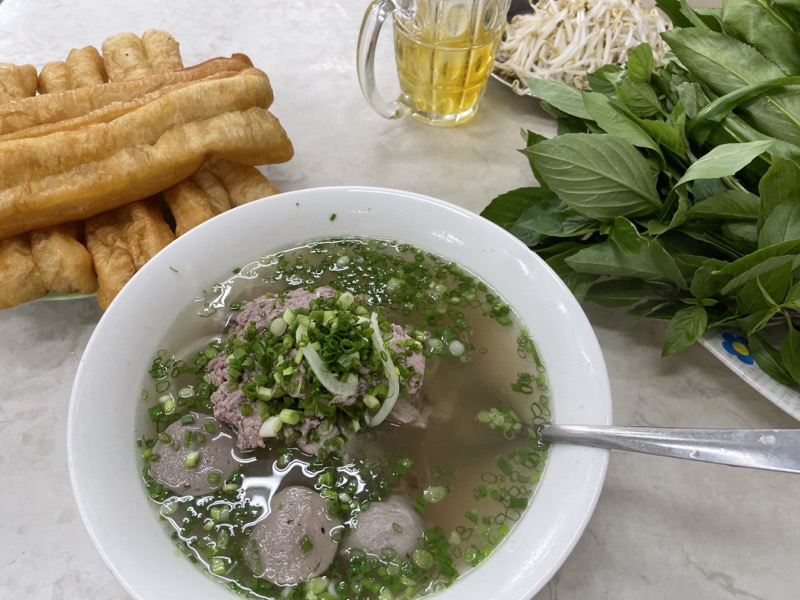
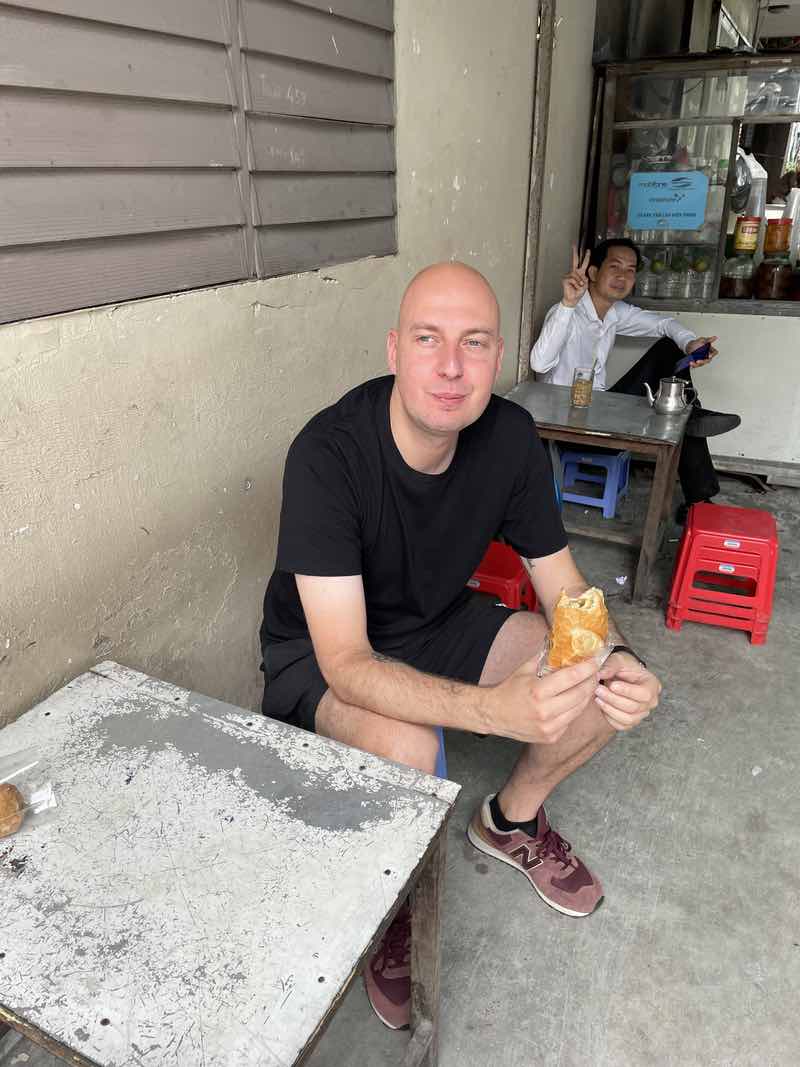

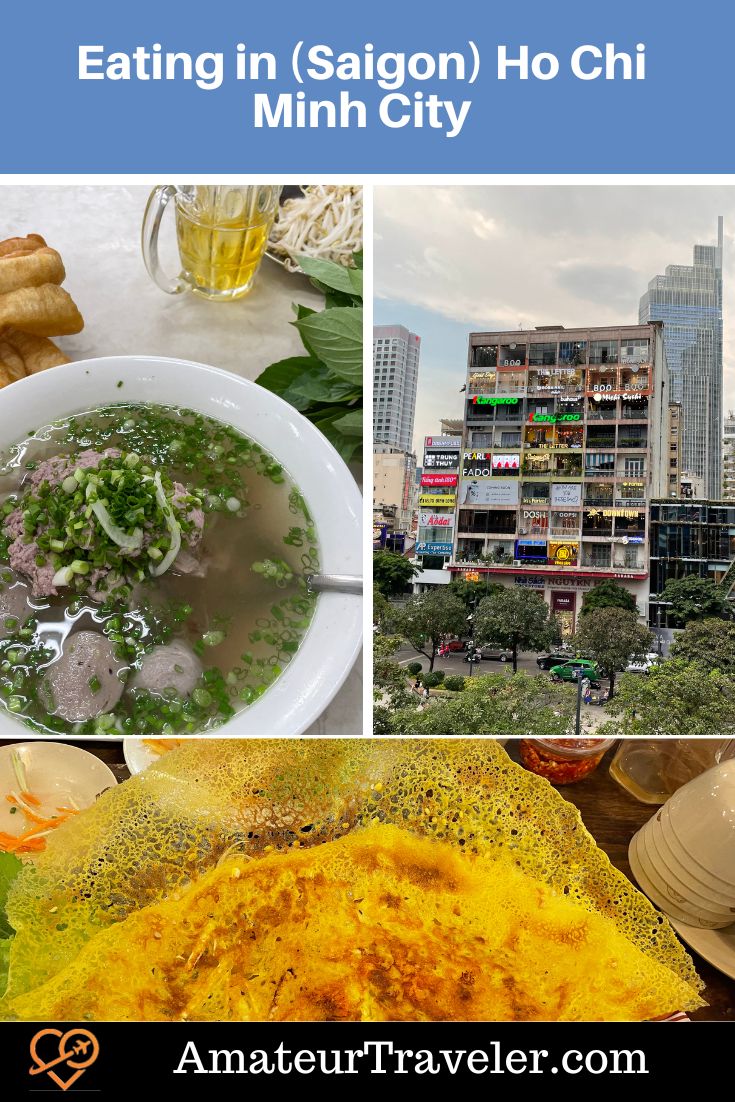
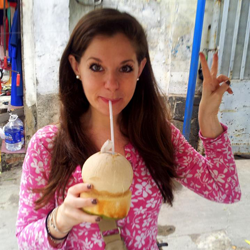 Travel to Ho Chi Minh City (Saigon), Vietnam – Episode 374
Travel to Ho Chi Minh City (Saigon), Vietnam – Episode 374 Vietnam Visions
Vietnam Visions Travel to Vietnam – Episode 76
Travel to Vietnam – Episode 76 Travel to Hanoi and Northern Vietnam – Episode 804
Travel to Hanoi and Northern Vietnam – Episode 804
